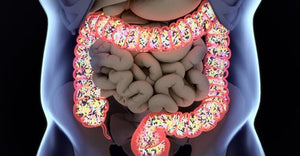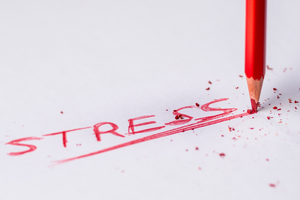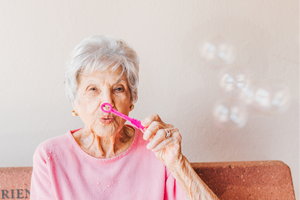Men & Osteoporosis: Women’s World No More

When you hear the word osteoporosis, the image that automatically comes to mind is probably that of a frail, elderly woman, hunched over and weak. And it’s true that after menopause, women face a much greater risk for bone fractures than when they’re younger. (This is due, in part, to the dramatic decrease in estrogen levels, because estrogen helps support healthy bones.) With so much education on bone health focused at older women, you might be surprised to learn that men of a certain age are also at high risk for osteoporosis.
According to the National Osteoporosis Foundation, two million men have osteoporosis, and another twelve million may be at risk. In fact, by age 60-70, men lose bone density at about the same rate as women. Some sources put the lifetime risk for bone fractures in men over age 60 at 25%, with this increasing to 42% for men with diagnosed osteoporosis—nothing to sneeze at. In addition to the physical pain and inconvenience that may come along with a severe fracture, older men and women face psychological ramifications from the potential loss of mobility and independence, which may be even more devastating than the physical effects.
Psychology plays a big role when it comes to men and bone health. Among laypeople and healthcare professionals alike, osteoporosis is often viewed as a “woman’s disease.” This might give men a false sense of invincibility and lead them to be less proactive about their bone health. It may also cause healthcare providers to miss signs of bone mineral loss in men that they might pay more attention to in women, such as a decrease in height, or the occurrence of fractures in the absence of a causative trauma.
In fact, men taking pharmaceutical drugs for osteoporosis have reported feeling resentful toward healthcare providers who failed to investigate signs of bone loss, or who failed to educate them regarding bone loss as a potential side-effect of medication they were on for other conditions. Interestingly, even after being better informed regarding their bone health status, many men lack faith in the drugs they’re prescribed. They report seeing bone loss as an inevitable part of aging, over which they have little control, regardless of diet and lifestyle. Moreover, they may actively avoid dietary and lifestyle behaviors known to support healthy bones, as they don’t want to be perceived as weak, or as being overly concerned and taking an active role in their healthcare, which they fear others might interpret as diminished masculinity.
It is unfortunate that there is such a strong gender stigma associated with men and osteoporosis, because this may keep men from seeking preventive screenings and being proactive about their bone health. It is estimated that 30-60% of osteoporosis in men is secondary, meaning that it’s a downstream result of another condition, or a side-effect from medication prescribed for other purposes. One such secondary cause is hypogonadism, which is a failure of the testes to produce androgen hormones, sperm, or both. The prevalence of hypogonadism seems to increase with age: estimates range from 7% of men aged 40-60 years, 22% of men 60-80 years, and 36% of men over 80. In a study of elderly male nursing home residents, 66% of the residents who had sustained a prior hip fracture had hypogonadism. Just as estrogen facilitates bone density in women, adequate levels of testosterone seem to benefit men in this regard, and testosterone levels decline naturally with advanced age.
Recommendations for supporting healthy bone mass in men mirror those provided for women: adequate bone-building nutrients from food (including calcium, vitamin D, magnesium, and adequate protein), supplemental vitamins and minerals when necessary, periodic testing of bone mineral density, weight-bearing exercise and lifestyle counseling. The biggest differences when it comes to men’s bone health seem to be the need for effective education aimed specifically at men, and perhaps even more important, removal of the gender stigma.
Sources
- Harvard Health Letter. Men: Pay Attention to Osteoporosis. Harv Health Lett. 2012 Aug;37(10):5.
- Orwig DL, Chiles N, Jones M, Hochberg MC. Osteoporosis in men: update 2011. Rheum Dis Clin North Am. 2011 Aug;37(3):401-14.
- Solimeo SL, Weber TJ, Gold DT. Older men's explanatory model for osteoporosis. Gerontologist. 2011 Aug;51(4):530-9.
- David Brady







Comments 0